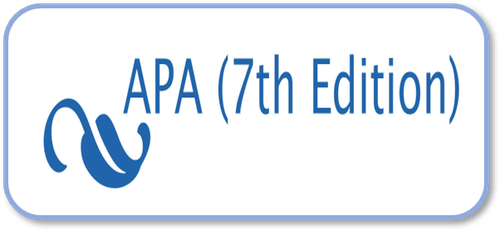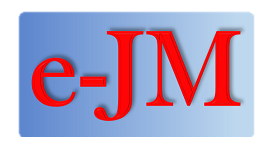Intellectual Capital, Female Manager Innovative Behavior And Catering Business Performance
DOI:
https://doi.org/10.24912/jm.v25i1.702Abstract
The problem of the catering business is that tastes tend to be less tasty, mistakes in choosing non-quality cooking ingredients, and employees (chefs) tend not to be painstaking, so it is interesting to research by investigating the relationship of intellectual capital with the innovative behaviour of women managers and impacting on business performance through competitive advantage. From 25 catering businesses headed by women managers, we set managers and employees (cooks) as 75 respondents (purposive sampling) with data analysis using WarpPLS 7.0. We found that the better the intellectual capital, the better the innovative behaviour of female managers, and the better the catering business performance in Makassar City. We found that the better the intellectual capital, the better female managers' innovative behaviour, and the better the catering business performance in Makassar City. We also find that behaviour innovation is getting better so that this business has a competitive advantage and good business performance.
References
Achtenhagen, L., and Tillmar, M. (2013). Studies on women’s entrepreneurship from Nordic countries and beyond. International Journal of Gender and Entrepreneurship, 5(1), 4–16.
Al-ansari, Y., Pervan, S., and Xu, J. (2013). Innovation and business performance of SMEs : the case of Dubai. Education, Business and Society: Contemporary Middle Eastern Issues, 6(3/4), 162–180.
Aramand, M. (2013). Women entrepreneurship in Mongolia: The role of culture on entrepreneurial motivation. Equality, Diversity and Inclusion, 32(1), 68–82.
Barney, J. (1991). Firm Resources and Sustained Competitive Advantage. Journal of Management, xxx(xxx) xxx-xxx.
Bellora, L., Guenther, T. W., and Thomas, W. (2013). Drivers of innovation capital disclosure in intellectual capital statements: Evidence from Europe. The British Accounting Review, 5(3), 35-46.
Bhardwaj, B. R. (2014). Impact of education and training on performance of women entrepreneurs: A study in emerging market context. Journal of Entrepreneurship in Emerging Economies, 6(1), 38–52.
Brinia, V. (2012). Men vs women; educational leadership in primary schools in Greece: an empirical study. International Journal of Educational Management, 26(2), 175–191.
Carrasco, I. (2014). Gender gap in innovation : an institutionalist explanation. Management Decision, 52(2), 410–424.
Chasaki, D. (2017). Entrepreneurial-minded learning in a freshman mini-project in Computing. ASEE Annual Conference and Exposition, Conference Proceedings, 2017-June, 26-37.
Chou, C. Y., Huang, C. H., and Lin, T. A. (2018). Organizational intellectual capital and its relation to frontline service employee innovative behavior: consumer value co-creation behavior as a moderator. Service Business, 12(4), 663–684.
Clarke, J. S., and Holt, R. (2019). Images of entrepreneurship: Using drawing to explore entrepreneurial experience. Journal of Business Venturing Insights, 11(December 2018).
Davcik, N. S., and Sharma, P. (2016). Marketing resources , performance , and competitive advantage : A review and future research directions. Journal of Business Research.
Demirbag, M., Tatoglu, E., Tekinkus, M., and Zaim, S. (2006). An analysis of the relationship between TQM implementation and organizational performance: Evidence from Turkish SMEs. Journal of Manufacturing Technology Management, 17(6), 829–847.
Diana, C., Sorin, M., Mirela, I., Laura, M., and Sabina, I. (2015). Creating Competitive Advantage in Coal Mining Industry in Romania : A New Challenge. Procedia Economics and Finance, 23(October 2014), 428–433.
Dzogbenuku, R. K., and Keelson, S. A. (2019). Marketing and entrepreneurial success in emerging markets: the nexus. Asia Pacific Journal of Innovation and Entrepreneurship, 13(2), 168–187.
Ejrami, M., Salehi, N., and Ahmadian, S. (2016). The Effect of Marketing Capabilities on Competitive Advantage and Performance with Moderating Role of Risk Management in Importation Companies. Procedia Economics and Finance, 36(16), 22–28.
Golemen, D. (2002). Emmotional Intelligence: Mengapa EI Lebih Penting daripada IQ, PT. Gramedia Pustaka Utama, Jakarta
Han, Y., and Li, D. (2015). Effects of intellectual capital on innovative performance The role of knowledge-based dynamic capability. Management Decision, 53(1), 40–56.
Harvey, M., Novicevic, M., and Breland, J. W. (2009). Global dual-career exploration and the role of hope and curiosity during the process. Journal of Managerial Psychology, 24(2), 178–197.
Joshi, M., Cahill, D., Sidhu, J., and Kansal, M. (2012). Intellectual capital and financial performance : an evaluation of the Australian financial sector. Journal of Intellectual Capital, 14(2), 264–285.
Kamukama, N., Ahiauzu, A., and Ntayi, J. M. (2011). Competitive advantage: mediator of intellectual capital and performance. Journal of Intellectual Capital, 12(1), 152–164.
Kariv, D. (2012). “Off stage-on stage”: men and women entrepreneurs leading change and business growth. Journal of Enterprising Communities: People and Places in the Global Economy, 6(2), 169–184.
Katarzyna, Ł. (2015). Development of Competitive Advantage of Small Innovative Firm – How to Model Business Advice Influence within The Process ? Procedia Economics and Finance, 23(October 2014), 487–494.
Kurnia, K. (2014). Imajinasi Picu Naluri Bisnis http://www.biskom.web.id/2014/10/20/kafi-kurnia-imajinasi-picu-naluri-bisnis.bwi.
Krugman, P. R. (1996). Making Sense Of The Competitiveness Debate. Massachusetts Institute of Technology. The Oxford Review of Economic Policy, 12(3), 17–25.
Lakhal, L. (2009). Impact of quality on competitive advantage and organizational performance. Journal of the Operational Research Society, 60(5), 637–645.
Lee, Y. G., Jasper, C. R., and Fitzgerald, M. A. (2010). Gender Differences in Perceived Business Success and Profit Growth Among Family Business Managers. J Fam Econ Iss, 31, 458–474.
López-ruiz, V., Alfaro-navarro, J., and Nevado-peña, D. (2014). Knowledge-city index construction : An intellectual capital perspective. Expert Systems with Applications.
Maditinos, D., Chatzoudes, D., Tsairidis, C., and Theriou, G. (2011). The impact of intellectual capital on firms’ market value and financial performance. Journal of Intellectual Capital, 12(1), 132–151.
Maxfield, S., Shapiro, M., Gupta, V., and Hass, S. (2010). Gender and risk : women , risk taking and risk aversion. Gender in Management: An International Journal, 25(7), 586–604.
Mondal, A., and Ghosh, S. K. (2012). Intellectual capital and financial performance of Indian banks. Journal of Intellectual Capital, 13(4), 515–530.
Nadia, N., Aziz, A., and Samad, S. (2016). Innovation and Competitive Advantage : Moderating Effects of Firm Age in Foods Manufacturing SMEs in Malaysia. Procedia Economics and Finance, 35(October 2015), 256–266.
Namvar, M., Fathian, M., Akhavan, P., and Gholamian, M. R. (2010). Exploring the impacts of intellectual property on intellectual capital and company performance The case of Iranian computer and electronic. Management Decision, 48(5), 676–697.
Nikina, A., Shelton, L. M., and LeLoarne, S. (2015). An examination of how husbands, as key stakeholders, impact the success of women entrepreneurs. Journal of Small Business and Enterprise Development, 22(1), 38–62.
Örnek, A. Ş., and Ayas, S. (2015). The Relationship between Intellectual Capital, Innovative Work Behavior and Business Performance Reflection. Procedia - Social and Behavioral Sciences, 195, 1387–1395.
Özmutaf, N. M., Aktekin, E., Ergani, B., and Çıta, K. (2015). The Effects of Innovative Features of Women Managers on their Business Performance: The Food Exporter Companies in Aegean Region Sample. Procedia - Social and Behavioral Sciences, 195, 220–229.
Pargaonkar, Y. R. (2016). Leveraging patent landscape analysis and IP competitive intelligence for competitive advantage. World Patent Information, 45, 10–20.
Porter, M. E. (1990). Book Review: The Competitive Advantage of Nations. Journal of Management (Vol. 17), 55-65.
Solimun., Adji A. R., dan Nurjannah. (2017). Metode Statistika Multivariat: pemodelan Persamaan Struktural (SEM) Pendekatan WarpPLS. UB Press Malang.
Sölvell, Ö. (2015). The Competitive Advantage of Nations 25 years – opening up new perspectives on competitiveness. Competitiveness Review, 25(5), 471–481.
Subramaniam, M., and Youndt, M. A. (2005). The Influence Of Intellectual Capital On The Types Of Innovative Capabilities. Academy of Management Journal, 48(3), 450–463.
Sumail, L. O., and Abdullah, S. (2019). Innovative Behavior And Emotional Intelligence Of Managers In Managing A Catering Business. Jurnal Manajemen, 23(2), 290-301.
Sweida, G. L., and Reichard, R. J. (2013). Gender stereotyping effects on entrepreneurial self-efficacy and high-growth entrepreneurial intention. Journal of Small Business and Enterprise Development, 20(2), 296–313.
Sydler, R., Haefliger, S., and Pruksa, R. (2013). Measuring intellectual capital with financial figures : Can we predict firm profitability? European Management Journal, 12(5) 67-82
Valentine, S., Godkin, L., Page, K., and Rittenburg, T. (2009). Gender and ethics. Gender in Management: An International Journal, 24(2), 112–127.
Valentine, S., Godkin, L., Page, K., Rittenburg, T., Page, K., and Rittenburg, T. (2009). Gender and ethics Ethical judgments, ethical intentions, and altruism among healthcare professionals. Gender in Management: An International Journal, 24(2), 112–130.
Wahyuni, S., and Ng, K. K. (2012). Historical outlook of Indonesian competitiveness : past and current performance. Competitiveness Review: An International Business Journal, 22(3), 207–234.
Wang, Z., Wang, N., and Liang, H. (2014). Knowledge sharing , intellectual capital and firm performance. Management Decision, 52(2), 230–258.
Yaseen, S. G., Dajani, D., and Hasan, Y. (2016). Computers in Human Behavior The impact of intellectual capital on the competitive advantage : Applied study in Jordanian telecommunication companies. Computers in Human Behavior, 62, 168–175.
Downloads
Published
How to Cite
Issue
Section
License
Copyright (c) 2021 Jurnal Manajemen

This work is licensed under a Creative Commons Attribution-NonCommercial-ShareAlike 4.0 International License.
This journal provides immediate open access to its content on the principle that making research freely available to the public supports a greater global exchange of knowledge.

This work is licensed under a Creative Commons Attribution-NonCommercial-ShareAlike 4.0 International License



















